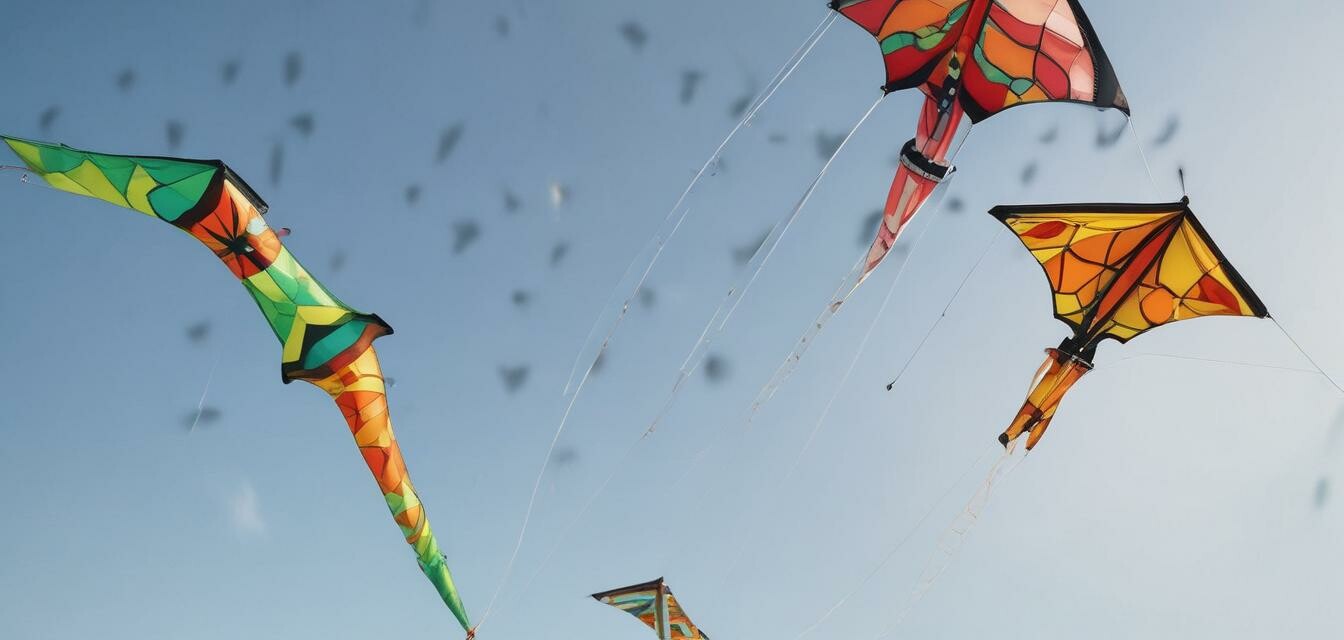
The Rise of Eco-Friendly Kites in 2024
Key Takeaways
- Eco-friendly kites are made from sustainable materials.
- Innovative designs are enhancing flying experiences.
- The kite industry is embracing sustainability trends.
- Eco-conscious manufacturing practices are on the rise.
- Consumers are increasingly prioritizing eco-friendly products.
The kite industry is experiencing a transformative phase as more and more manufacturers embrace eco-friendly practices and materials. In 2024, we see a significant rise in the popularity of eco-friendly kites, appealing to environmentally conscious consumers. This article explores the latest trends in sustainable kite manufacturing, focusing on innovative designs and materials that are paving the way for an eco-friendly flying experience.
Emergence of Sustainable Materials
The surge in eco-friendly kites is primarily driven by the introduction of sustainable materials in kite manufacturing. These materials not only provide durability but also reduce environmental impact. Some key materials in use include:
- Recycled Plastics: Many manufacturers are now using recycled plastics to create longer-lasting kites.
- Organic Cotton: Utilizing organic cotton helps reduce chemical usage in production.
- Bamboo: This fast-growing plant is being adopted for structural components due to its strength and flexibility.
Why Eco-Friendly Materials Matter
Using sustainable materials in kite production contributes to:
- Reduced landfill waste
- Lower carbon footprints
- Preservation of natural resources
Innovative Eco-Friendly Designs
Alongside sustainable materials, manufacturers are focusing on innovative designs that not only enhance the aesthetics of kites but also improve their functionality. The trending designs include:
| Design Type | Description |
|---|---|
| Biodegradable Kites | These kites decompose naturally post-use, leaving no harmful residues. |
| Modular Kites | These kites allow users to replace parts rather than discarding the entire kite. |
| Colorful Patterns | Bright colors and patterns are created using eco-friendly dyes, enhancing visual aesthetics. |
The Shift in Consumer Consciousness
With the rise of eco-friendly kites, there is also a notable shift in consumer behavior. Today's consumers are more informed and aware of their purchase impacts. They are increasingly opting for products that align with their values. The following factors are contributing to this shift:
- Increased awareness of climate change
- Desire for sustainable leisure activities
- Support for brands that prioritize sustainability
Manufacturers Leading The Way
Some manufacturers are setting an example in the industry by incorporating eco-friendly practices:
- Using renewable energy sources: Many companies are switching to renewable power for their production lines.
- Implementing zero-waste manufacturing: This approach minimizes waste by recycling materials throughout the production process.
- Engaging in eco-friendly packaging: Use of biodegradable or recyclable materials for packaging products.
Future Trends to Look Out For
The eco-friendly kite movement is still evolving. Here are some expected trends in upcoming years:
- Greater use of smart technology to enhance kite flying experiences.
- Collaborations between designers and environmental organizations.
- Expansion of kite festivals showcasing eco-friendly designs.
Pros
- Sustainable materials minimize environmental impact.
- Innovative designs enhance the flying experience.
- Increased consumer support for eco-friendly products.
Cons
- Higher production costs may affect pricing.
- Limited availability compared to traditional kites.
Conclusion
The kite industry is embracing a new era characterized by eco-friendly and sustainable practices. As more consumers become aware of their choices' impacts, manufacturers are responding with innovative designs and materials that not only delight kite enthusiasts but also protect our planet. Staying tuned to these trends ensures that kite flying can be an enjoyable and responsible hobby for generations to come.